2023-12-25
Freely running, exploring their surroundings, and interacting with counterparts are among the favorite activities of most dogs. Our pet companions are inquisitive creatures, whose desire to investigate their surroundings using their sense of smell and sight is well-known.
These funny and free-spirited activities may be a wonderful experience for our dogs, but they may not be as pleasant for us- their human family members. If we strive to become the best pet parents for our paw friends, we should be responsible, aware, loving, and understanding. All these qualities are essential for the well-being of our dogs, especially when they are outdoors.
There are so many distractions outdoors such as sounds, smells, food leftovers, other dogs, humans, bodies of water to be explored, etc., that might hide potential danger to our canines.
Today, we will help you prepare for some common challenges and potentially dangerous situations that may occur outdoors. That way it will be easier for you to take precautions to keep your beloved furry friend safe and healthy.
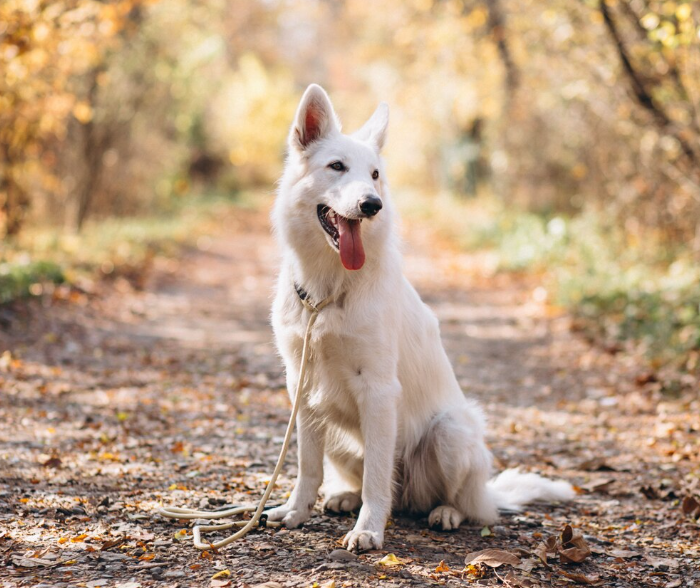
It is an absolute no-go to take your dog on walks outdoors if they have not received all the needed vaccinations. After the first shot of vaccinations, you still can take your pup to the garden/backyard or carry it in your arms for a very short “trip” in the neighborhood. However, you should make sure that your paw family member has received their two shots of vaccinations, prior to taking them for a walk in the local park or meeting them with other dogs. This usually happens between 14–16 weeks of age.
Consulting with a veterinarian and having your pup go through check-ups is mandatory for responsible owners. During the first few months of your pup’s life veterinarian visits will be quite frequent, until they reach the age of 1 year. After that, you should bring them for annual check-ups, which also include vaccination against rabies.
Going through parasite control is another necessity for pups that should never be neglected. This will help ensure that they are protected from external parasites like fleas and mites as well as from internal ones like heartworms and intestinal worms, which can be very dangerous.
Your veterinarian will advise you on what products will be best for your dog based on where you live and what parasites are common in your area. The products designed for parasite control usually come in the form of pills, chewables, and drops.
You should not let your dog just wander off when in public. This can be very dangerous for them, especially if in a busy or unknown area. Make sure your paw friend is under your control at all times to avoid any potentially dangerous situations.
When buying supplies like a leash, collar, or harness, you should consider their size and material. If they are too large or tight, or if they are made of a material that makes your dog feel uncomfortable and tense, you are not likely to have a positive experience with your paw friend in public. We will give you a quick tip on how to properly measure your dog, so you can get them a harness of the right size.
Measure their chest at the widest part of their torso, which is located just behind the front legs. There should be enough space (about two fingers) between your canine’s chest and the harness. Don’t forget, to adjust the size throughout their growth.
Another helpful tip is to gradually introduce any accessories to help your dog get used to them and associate them with a positive experience. How to do that?
You can just place the supplies near your pooch’s food bowl or bedding and supervise their reaction. Reward your doggo every time they seem interested in the leash and sniff it, nudge it, paw it or even only look at it in the beginning.
Once your paw friend gets used to the presence of the gear, you can start taking them on very short walks at home. Reward them every few steps if they remain calm and relaxed. Increase the distractions and change the location step by step.
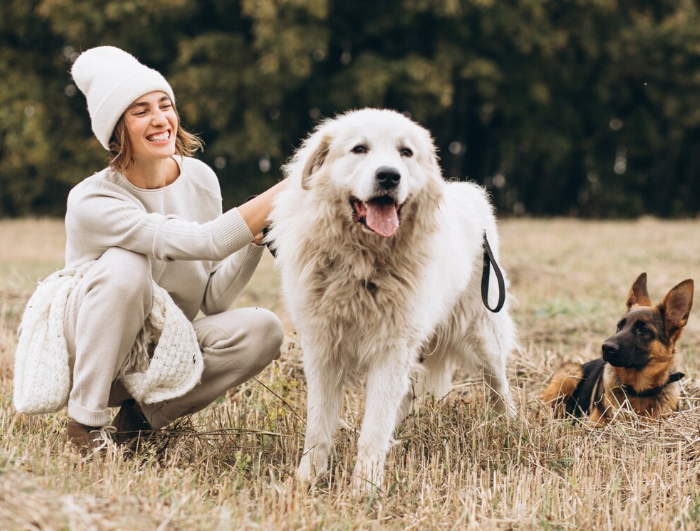
The list of toxins for dogs can be very long, as we can include different types of food, plants, dangerous animals, or any types of items outdoors, that your dog may find interesting and decide to investigate.
It is essential that you are able to recognize any harmful plants, items, foods, or animals to avoid them and ensure your pet’s safety. Some of the plants that you should keep your dog away from are:
Sago Palm- all parts of this plant are toxic to dogs and can cause severe liver damage;
Castor Bean Plant- the seeds of that plant contain ricin, which is highly toxic;
Oleander- all parts of the plant are toxic and can affect the heart, causing serious health issues.
Azalea/Rhododendron- ingesting even a small amount of these plants can lead to vomiting, diarrhea, and more serious issues;
Yew- the entire plant is toxic, especially the berries. It can lead to cardiac failure and even death if ingested;
Autumn Crocus- ingesting any part of this plant can lead to severe gastrointestinal issues, kidney and liver damage, respiratory failure, and even death;
Jimson weed (Datura stramonium), which is also known as thorn apple, devil's trumpet, and Indian apple is toxic to pets;
English ivy- if ingested by your dog, it can lead to abdominal pain, vomiting, and diarrhea.
Mistletoe- all parts of this plant are (moderately) toxic, so if your dog ingests it by accident, you should consult with a veterinarian as soon as possible.
Foods that contain xylitol, and cocoa, should be avoided in any case, as these ingredients are highly toxic to dogs. Raisins, grapes, onion, garlic, the pits of stone fruits, cooked bones that are very fragile, bread dough, alcoholic beverages, and dairy products should also be kept away from our beloved paw friends.
You may have heard of a condition that is characterized by eating non-edible products. It is called “pica” and can affect dogs too. It can be caused by different factors, especially a lack of a nutritional diet, and the need to compensate for the missing nutrients. This condition can cause your canine to eat non-food items, which can be inherently harmful.
Poisonous animals like certain types of snakes, spiders, and frogs can lead to serious complications if their toxins spread through your dog’s skin. You should be familiar with the areas you visit with your dog and avoid places that are habitats for these animals.
Stagnant water bodies are a favorite place for mosquitoes to live and breed. Mosquitoes can transfer parasites and diseases that can be very harmful to your dog, once they enter their bloodstream.
Pesticides that are used on lawns for parasite control are toxic to dogs, causing vomiting, diarrhea, nausea, and skin rashes. You should be very observant of any signs notifying you of the use of chemicals.
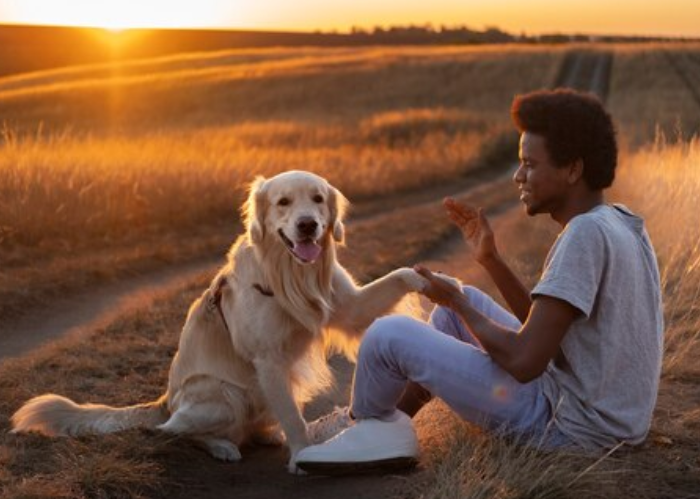
You should avoid taking your dogs on walks in either very hot or cold weather. If high-temperature amplitudes are typical for the area you live in, you should take precautions.
For instance, in the hot season, you should avoid surfaces like concrete, that get extremely hot and can burn your dog’s paws. Also, you might consider going outside early in the morning or later in the evening, when the temperatures are more bearable.
Always bring fresh water for yourself and your paw friend as hydration is crucial in the hot weather.
You might look for shady spots where your dog won’t be exposed to direct sunlight if it is extremely hot.
Never leave your canine unattended in a vehicle, as the temperature in the car can reach up to 125 °F / 66 °C.
If the weather is too cold, you may want to put a jacket and even booties on your dog to keep them warm. However, your dog’s level of tolerance to cold weather depends on their size, weight, and coat type.
As you may know, some dog breeds like the Siberian Husky, the Alaskan Malamute, the Anatolian Shepherd, the Akita, the Bernese Mountain Dog, the Saint Bernard, and the American Eskimo Dog do pretty well in cold weather due to their origin and physical features.
However, tiny dog breeds, like the Chihuahua, or breeds with thin and short coats like the Italian Greyhound, and the Basenji won’t do well in low temperatures.
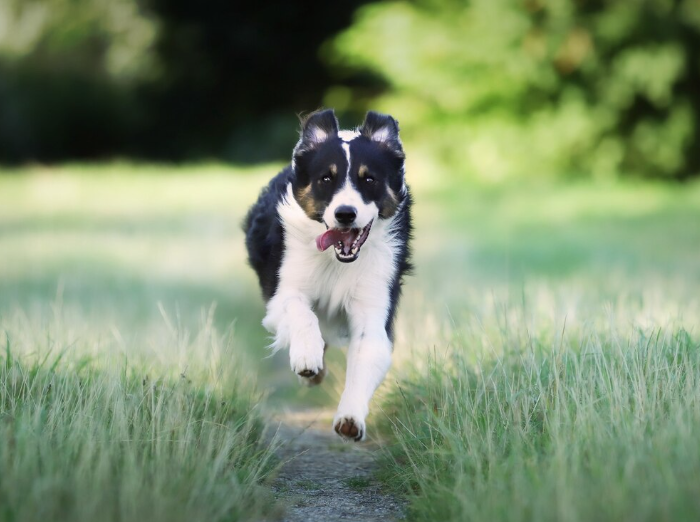
Not only can interactions with poisonous animals be dangerous for your paw friend, but also interactions with their counterparts can pose a risk. It is recommended that you observe your paw friend while playing with other dogs and try to meet them only with canines that are vaccinated and have undergone parasite control.
Proper behavior is of course another essential factor to be considered. Avoid reactive and erratic dogs, not only because they can be dangerous due to a lack of training and socialization, but also because they can negatively affect your dog’s behavior.
Just like humans, dogs do also pick up on social cues. Meeting well-mannered canines will help ensure that your furry friend will become well-behaved too.
Microchips, ID tags, and ID cards are important tools to help you find your dog if they get lost. We advise you to add your contact information to the tag, card, or microchip of your dog, so that the people who may find them, can reach out to you.
Basic obedience training is not only recommended for dogs who will participate in various competitions, or who will be trained as emotional support animals or service dogs.
No, it is actually advisable that all dog owners take their time to teach their canines good manners and basic commands like “sit”, “stay” and “recall”. They may seem unnecessary to you, but they can actually be of immense help in public.
Knowing that your dog is well-behaved and won’t start wandering off, excessively sniffing around, eating trash, or chasing other animals, will put your mind at ease when outdoors.
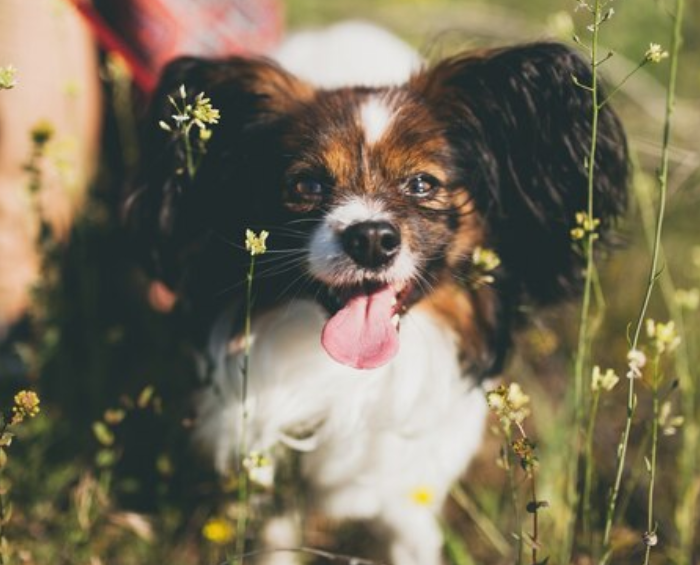
Although we tend to think that our paw friends are not likely to face cases of emergency, because we always supervise them, keep them under control, train them, etc., we never know what life can bring. That is why it is recommended that you set up a first aid kit for your dog just in case or purchase one that is already ready to use.
Antibiotics, gauze, adhesive tape, cotton balls, towels, a digital thermometer, scissors, a muzzle, and a styptic powder are some items that you may want to include in the first aid kit for your paw friend.
Last, but not least, you should closely observe your dog when outdoors to be able to recognize symptoms of a potential issue. These can be vomiting, diarrhea, abrupt lethargy, panting, very itchy skin, pale gums, difficulties breathing or relieving themselves, coughing, discharge from the eyes, nose, or other body areas, bald patches...etc.
The more observant you are, the more information you will have about your dog’s symptoms. This will help your canine’s vet make a diagnosis more quickly and guide them in the right direction in terms of treatment.
It is our responsibility to take care of our beloved pet companions and ensure that they are safe and healthy at home and outdoors.